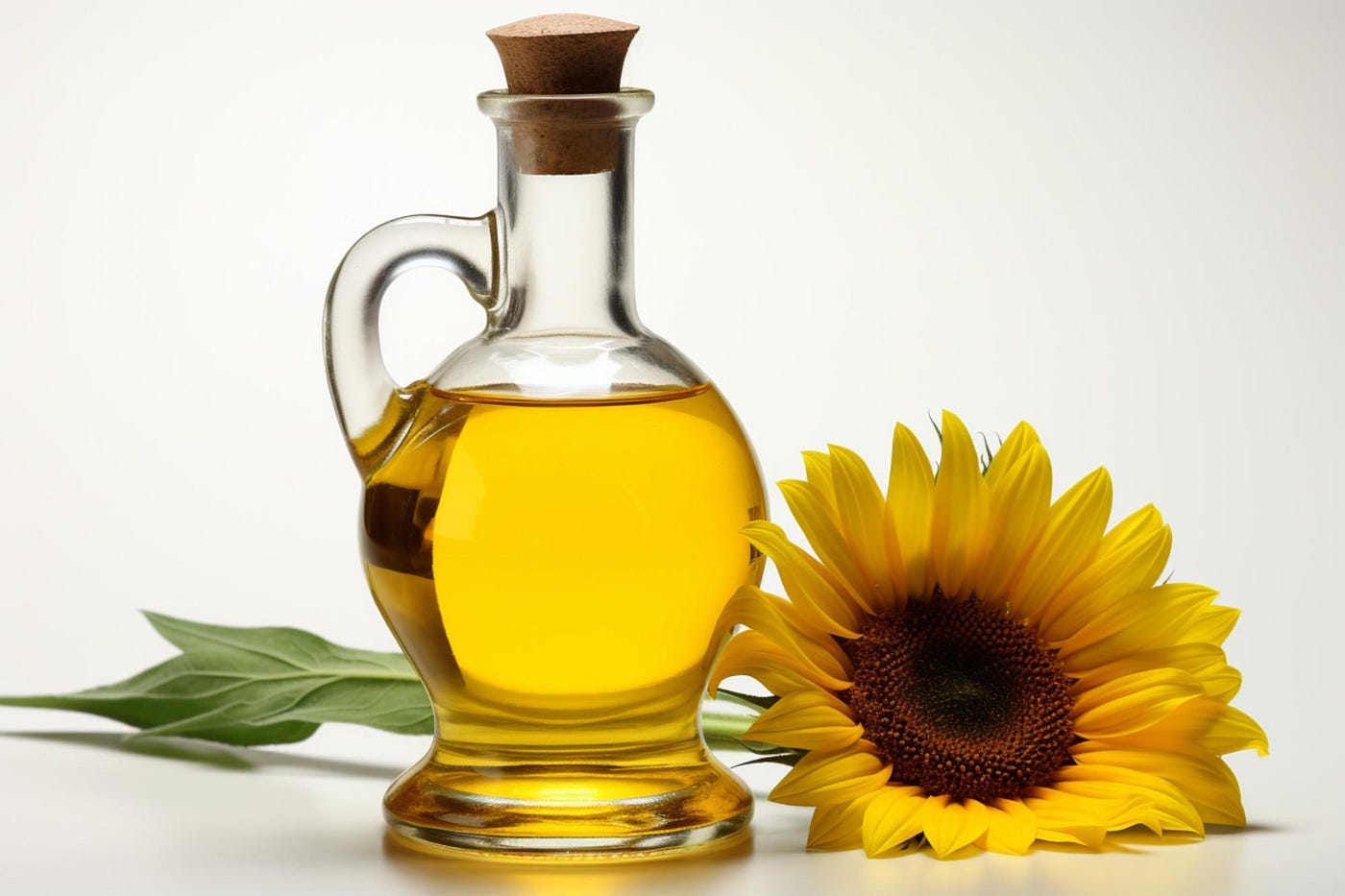Sunflower Oil High Oleic, Expeller Pressed
| DESCRIPTION | New hybrids of the traditional sunflower species produce an oil unusually high in oleic acid (C18:1). The appearance of this new hybrid only differs in the color of the kernel shells from off white to silver gray compared to black resp. black stripes. The seed is pressed; the obtained oil is filtered and refined. The subsequent 4 step refining (deacidification, bleaching, steam deodorization, and winterization) results in a light transparent high oleic sunflower seed oil with excellent oxidative stability and nearly neutral in odor and taste. | |
| ORIGIN: | Thailand | |
| CERTIFICATE OF ANALYSIS: | Each shipment to include certificate. | |
| APPEARANCE, TASTE & COLOR | Appearance: Light transparent / Taste: Nearly neutral / Color: Lovibond 5 ¼: Red = 1.5, yellow = 12 | |
| SPECIFICATIONS | ||
| Density (20° C) | 0.909– 0.915 | |
| Refractive Index (20° C) | 1.464 – 1.471 (Codex) | |
| Iodine Value | 78 – 90 | |
| Peroxide Value | 1.00 max | |
| Saponification Value | 182 – 194 (Codex) | |
| Smoke Point | ca. 240° C | |
| Free Fatty Acids (% of Oleic Acid) | 0.1 % max | |
| FATTY ACID COMPOSITION | ||
| Palmitic Acid | C 16:0 | 5 % max |
| Stearic Acid | C 18:0 | 6.2 % max |
| Oleic Acid | C 18:1 | 75 – 92 % |
| Linoleic Acid | C 18:2 | 17 % max |
| Linolenic Acid | C 18:3 | 0.3 % max |
| Arachidic Acid | C 20:0 | .5 % max |
| Behenic Acid | C 22:0 | 1.6 % max |
| Other Fatty Acids | 3 % max | |
| STORAGE: | Keep away from direct sunlight at room temperature in tightly sealed containers (nitrogen topping is of advantage) | |
| USAGE: | The excellent stability to oxidation is comparable to that of a good olive oil and approximately twice as high as with traditional sunflower oil and soybean oils. It is therefore, particularly suited as a fat component and carrier for pharmaceutical and cosmetic formulations. Its usage in food: in baker’s ware and pastries (un-hydrogenated spray oil), baby food and margarines, as a baking and frying oil (high smoke point). Like olive oil, high oleic sunflower seed oil is believed to favorably influence the human cholesterol metabolism due to its high content of monounsaturated oleic acid (C18:1). | |

